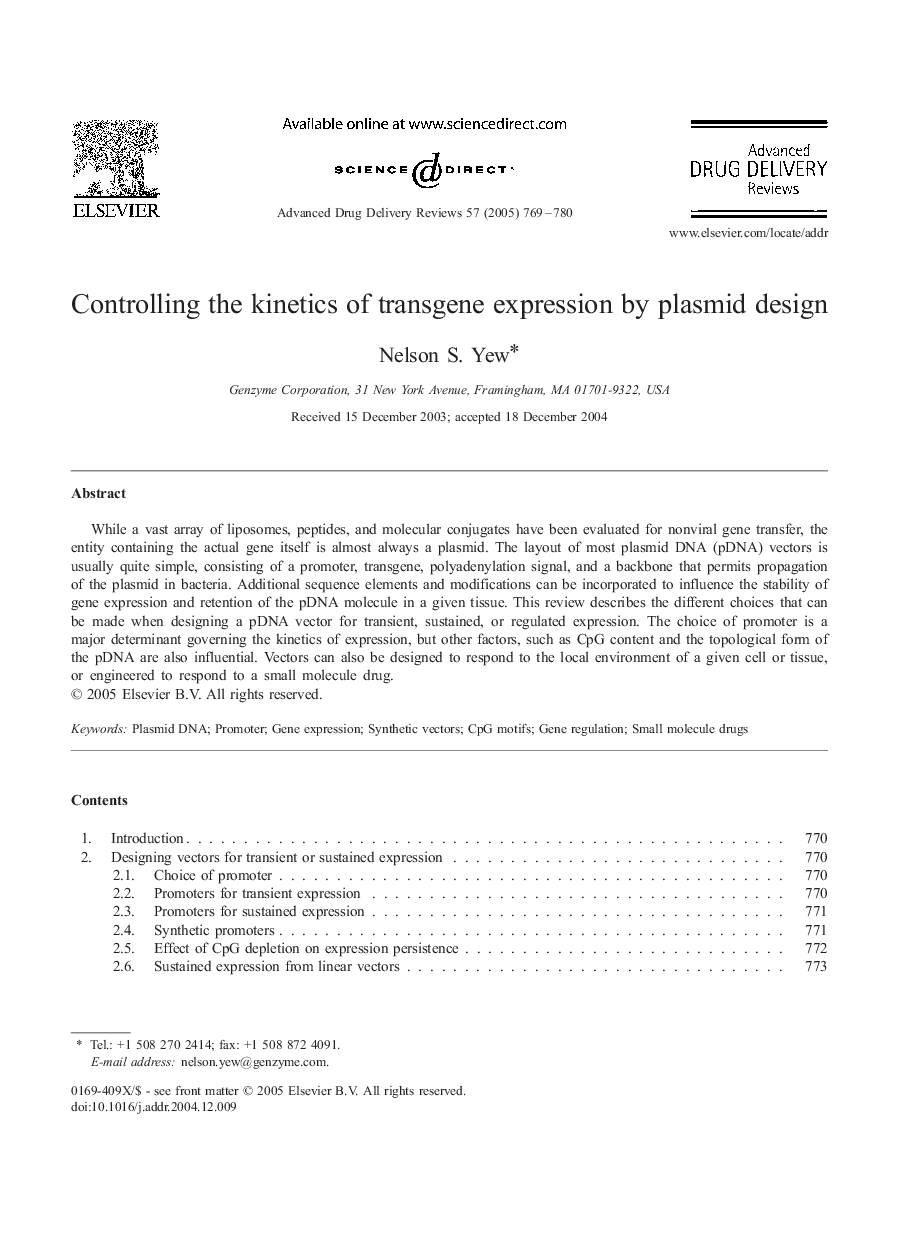| Article ID | Journal | Published Year | Pages | File Type |
|---|---|---|---|---|
| 10883952 | Advanced Drug Delivery Reviews | 2005 | 12 Pages |
Abstract
While a vast array of liposomes, peptides, and molecular conjugates have been evaluated for nonviral gene transfer, the entity containing the actual gene itself is almost always a plasmid. The layout of most plasmid DNA (pDNA) vectors is usually quite simple, consisting of a promoter, transgene, polyadenylation signal, and a backbone that permits propagation of the plasmid in bacteria. Additional sequence elements and modifications can be incorporated to influence the stability of gene expression and retention of the pDNA molecule in a given tissue. This review describes the different choices that can be made when designing a pDNA vector for transient, sustained, or regulated expression. The choice of promoter is a major determinant governing the kinetics of expression, but other factors, such as CpG content and the topological form of the pDNA are also influential. Vectors can also be designed to respond to the local environment of a given cell or tissue, or engineered to respond to a small molecule drug.
Related Topics
Life Sciences
Biochemistry, Genetics and Molecular Biology
Biotechnology
Authors
Nelson S. Yew,
